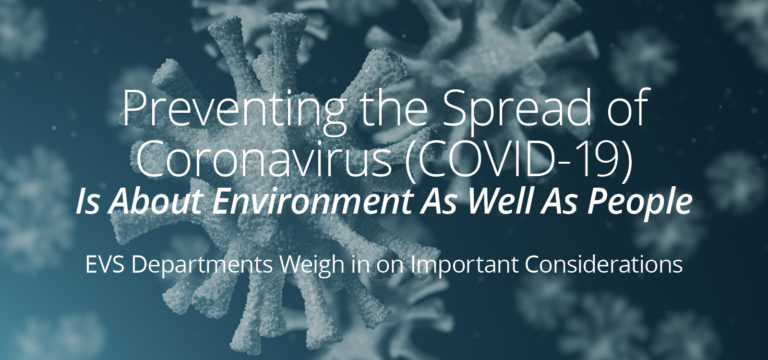insights
Preventing the Spread of Coronavirus (COVID-19) Is About Environment As Well As People

With over 47 million confirmed coronavirus (COVID-19) infections in the United States (as of 11–18-21), healthcare facilities have been maintaining procedures to manage the virus among their patient population and protect their frontline staff.
When a dangerous outbreak occurs, our minds go directly to preventing the spread by human behavior (handwashing and masking are still top preventative measures). But, as more people have begun to recognize, the other side of the equation in infection prevention is stopping the transmission via the environment with the help of the Environmental Services Department and Infection Prevention.
ES Optimizer Users Weigh In
When the pandemic first took hold in the United States, we asked some of the Environmental Services Directors using ES Optimizer how they were preparing their team to handle COVID-19 in the event there was an infection at their facility. They were working with their Infection Prevention and Compliance professionals on establishing and following protocols to sterilize the environment.
These lessons can still be applied in the present, and in the future should the U.S. ever experience another outbreak. Here’s what we learned from them about an effective response to a pandemic like COVID-19.
That response involves:
1. Disinfecting the environment when COVID-19 is present
EVS professionals must ensure they have the right cleaning agents on hand by following CDC recommendations to determine which disinfectants are effective against the virus. They also must adhere to instructions for proper use and protocol exactly. See the latest cleaning and disinfecting recommendations from the CDC, as well as a list of the types of disinfectants that are effective against COVID-19 from the EPA.
2. Keeping EVS professionals who are cleaning the environment safe
Environmental Services Technicians performing the work must have the appropriate PPE (personal protective equipment). Hospitals need to plan ahead and procure this if they don’t already have it. EVS professionals must be trained in proper donning and doffing procedure for PPE so the virus isn’t transmitted by the equipment. The CDC provides guidelines for this as well.
3. Safely discarding waste
EVS departments have to familiarize themselves with CDC guidelines for safe waste disposal, then develop a process that puts the hospital in compliance. One EVS Department’s policy will be to wrap the PPE and cleaning materials three times in red biohazard bags and then autoclave it.
4. A plan to ensure compliance with these and CDC protocols by the staff
Having a policy is the first step. Mobilizing the workforce to follow it is next. EVS departments need to develop strategies for relaying emerging information about the coronavirus to employees, and make certain that all EVS professionals are following CDC guidelines.
One facility identified a few specially skilled EVS technicians to handle the affected areas. They received regular training and updates on the procedures. Limiting this function to a few high-performing employees made managing compliance easier.
More Resources
Infection Prevention is best managed with a collaboration between human interaction and the environment. EVS teams help to maintain a safe environment, making them a critical part of the hospital, infection prevention, and patient health. Below are more resources for facilities and environmental services professionals to track developments in the COVID-19 pandemic as new information is disseminated by the experts.
- Our list of resources pertaining to disinfecting, PPE, and mental health
- The CDC’s Guide to Donning, Use & Doffing of Personal Protective Equipment
- A comprehensive list of resources maintained by the American Hospital Association

